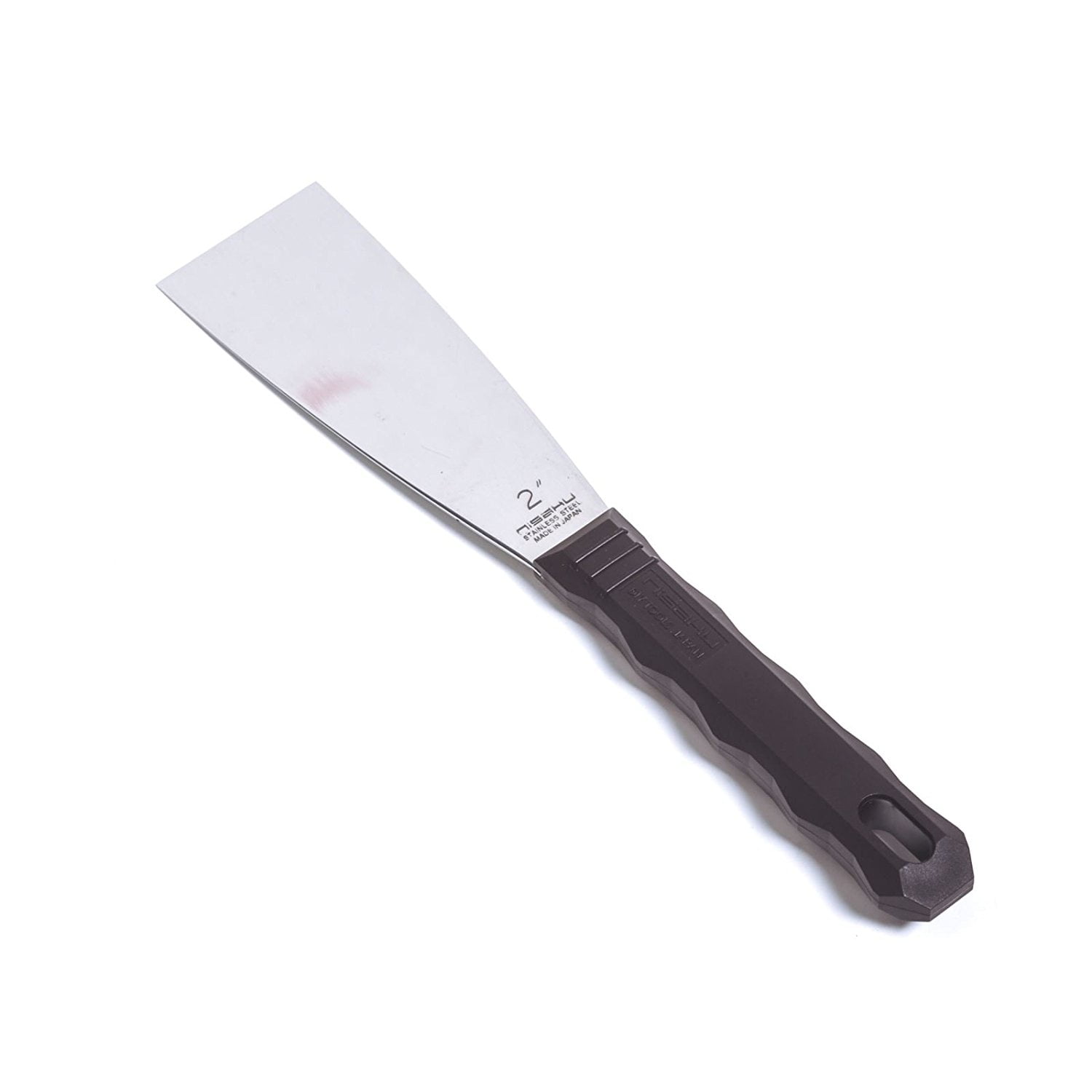

When it comes time to drywall, you will need at least three different widths of spatulas - properly called "knives" or "drywall compound knives". The inside curve scrapes excess paint off of your roller, and the list goes on. The front edge will remove plaster bumps or wall paper. The point will scrape into the grooves of molding. The hole will allow you to pull nails without a hammer. The 9 in 1 tool is very useful for preparing a wall to paint. If you are just sliding under wallpaper, you want it quite thin - less rigid but not actually flexible. In fact, if you are actually shaving wood or paint finish, you will want it solid and sharp. Scrapers are used to take things off, and you want them to be rigid. Technically, this is really the only "putty knife" of the lot - the others are actually spatulas, scrapers and knives

Run your finger lightly back over the work to seal it to both the window frame and the glass. You can easily pick up the excess on either side of the nice putty bead. Feed it under the bent, very flexible putty knife and simply move down the window. Hold a ball of it at the base of your fingers, near the palm of your hand. Kneed the putty until it is soft and consistent. That allows you to squeeze in the putty more smoothly. In fact the best window putty knife is extremely flexible. If you want to apply something, like window putty or even plaster, you will want a bit of flexibility.

First notice that some are rigid and some are flexible and some more flexible than others. Even just in the Richard's line of tools there is enough choice to make you wonder. Mine has been in place for over a year and it works well.It can get confusing at the store when you look at the wide variety of putty knives and scrapers. If that is too high for you, once glued in place, you can use your sanding block to sand the strip wood with little effort to produce the desired height. I used one eighth square bass wood strips, and while it seems high it produced a good effect and the rolling stock track well. It is cheap, easy and there are no gaps under the ties, no cutting little strips of card stock or styrene. You can then either glue or spike down your track. Re-swing the center line arc again, and then you can glue your roadbed to the grout using construction adhesive and the push pins to hold it in place while it dries. When dry a quick scuff with a sanding block, (80 grit paper) took off any high spots just like sanding cork roadbed. With a little practice it produces a nice taper. I applied the grout to the curved area with one edge of the knife riding on the strip wood, the other approximately two and one quarter inches inboard. I then took pre- mixed sanded tile grout and a flexable putty knife approximately two and a half inches wide. When dry, I sanded a taper on each end of the curve. With carpenters glue and push pins I glued lengths of strip wood, cut to the desired height of the super elevation, on that second line. I then created another arc one inch greater. With my compass I made an arc to match the track center line. My radius is about 34 inches at most of the places that I wanted to super elevate. I watched quite a few You Tube videos on this process, none to my satisfaction. Recently re-entering the hobby after many years away, I wanted to super elevate my curves.

I cut each sheet into rectangular shims measuring 1⁄4″ x 1⁄2″. Usually, both products are available in 18″ x 24″ sheets. It’s often sold in various colors as construction paper for children’s projects. I buy a thin (.030″) sheet of Oak Tag brand paper for this material. You can follow my method in the above right photo.įirst, I purchase two sheets of cardstock from an office or art supply store. However, I’ve installed superelevated curves on three layouts using an easy 4-step technique. Many modelers think adding superelevation to model railroad curves is difficult and involves complex transitionsīetween straight and curved track sections. This shifts the weight of the train towards the inside of the curve and diminishes the effect. On superelevated curves, the roadbed is raised so the outer rail is 4 to 6 inches higher than the inner rail. Prototype railroads counteract this effect by superelevating curved track. The higher the speed, the more likely the locomotive will derail. As a locomotive enters a curve, its forward motion keeps pulling it in a straight line, causing it to resist making the turn.


 0 kommentar(er)
0 kommentar(er)
